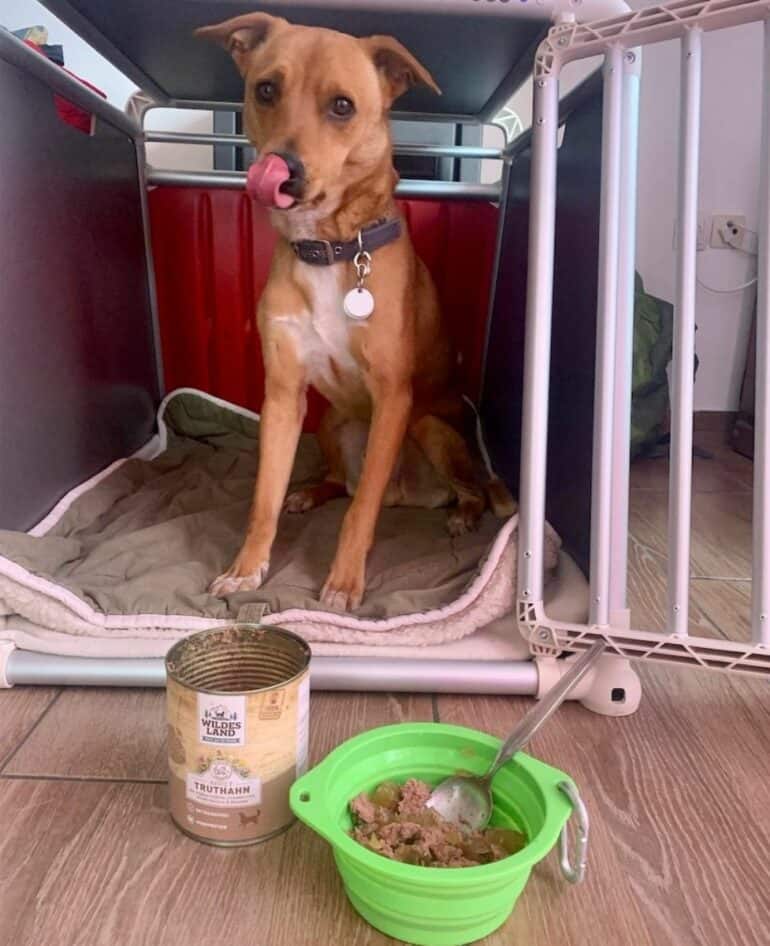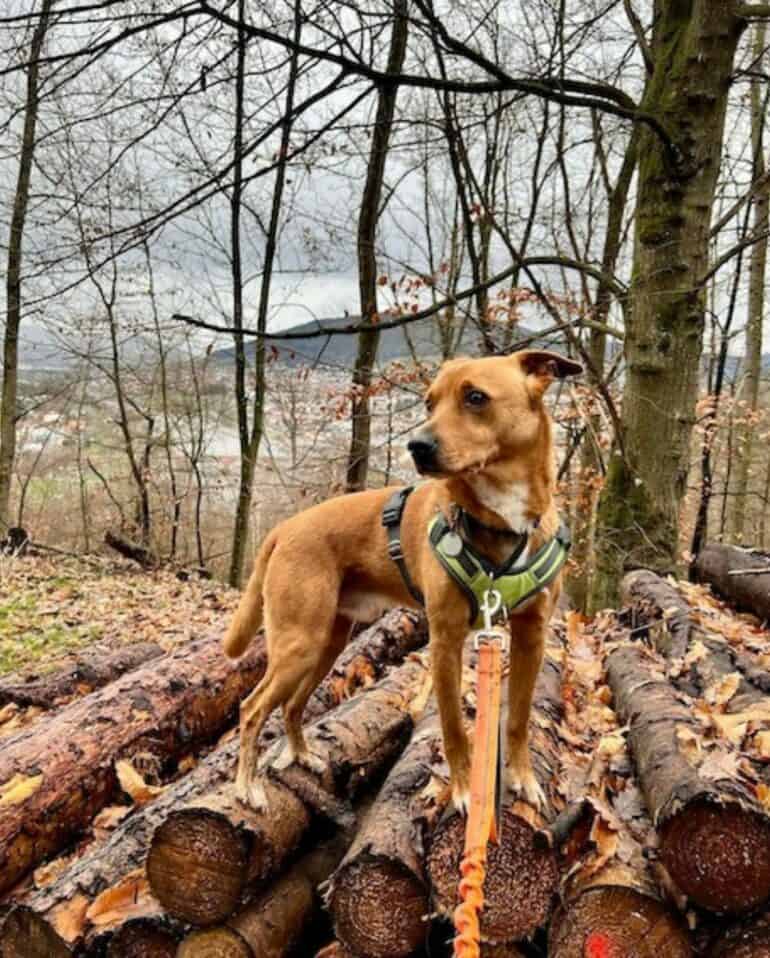When Can I Stop Using Treats In Training?
This post may contain affiliate links. We may earn money or products from the companies mentioned in this post.
Have you ever wondered When can I stop using treats in training?
I’m asking because you probably know how effective treats can be in dog training.
After all, they reinforce positive behaviors and motivate your dog to learn new commands, right?

However, the goal of dog training should ultimately be to transition away from relying on treats as a constant reward.
That said, the timing of when to stop using treats exclusively in training depends on several factors, including your dog’s individual progress and learning abilities.
So in this blog post, we’re going to look at several guidelines for when to stop using treats in training.
Why Should I Stop Using Treats In Training?
But first, let’s point out several reasons for this approach.
Your Dog Can Become Treat Obsessed
When you’re relying too much on treats, the most obvious side effect is that your dog can become treat-obsessed.
When that happens, they’re more likely to only listen when there’s a treat on the line.
At the same time, if treats are too readily available, their value as a reward can diminish.
Your dog might become less motivated to work for treats, and as a result, the effectiveness of positive reinforcement in training could decrease.
And that’s not what you want, right?
No!
You want your dog to listen and respect you because they genuinely want to, not just for the snacks!
For instance, imagine if your dog only behaves nicely on leash or doesn’t jump up on people as long as you’re handing out treats.
Well, that’s going to turn your walks and training sessions into a frustrating experience.
Because the moment you stop using treats in training your pup, they’re back to pulling you down the street and knocking your dinner guests over.
It’s Inconvenient & Expensive
So in order to prevent that, your treat pouch would always need to be filled to the brim when you head out for a walk and when you expect company.
But that’s inconvenient because carrying a treat pouch that’s constantly overflowing can become heavy and cumbersome.
It might even slow you down or make it uncomfortable to move around during training or walks with your dog.
Depending on how many times you walk your pup per day, this can also become expensive really quickly as you’ll constantly have to replenish your treats.
Too Many Treats Can Make Your Dog Fat
Also, cutting out (some) treats in training is healthier for your dog in the long run.
That’s because too many treats can cause extra pounds you don’t want your dog to carry.
And that’s not too far fetched as according to the Association for Pet Obesity Prevention, 59% of dogs were overweight in the US in 2022.
That’s more than half and a scary number!
So reducing your dog’s treat consumption will help keep them at the right weight.
And just in case you’re wondering – technically speaking, you could use kibble as training treats as well, but dry dog food is not going to motivate every dog.
Tip: When you’re using dog training treats, don’t feed more than 10% of your dog’s daily food allowance to avoid packing on the pounds.
When Should I Stop Giving My Dog Training Treats?
Now, once your dog has a solid understanding of basic commands like sit, stay, come, and lie down, you can start weaning your dog off treats.
Consistency in Behavior
So when your dog consistently responds to commands and performs well during training sessions and walks, that’s a sign that they understand what’s expected of them.
At this point, you can start to introduce two new approaches:
- Randomly reward your dog instead of treating them every single time they perform the desired behavior.
- Use variable rewards (not just treats) instead of offering treats every single time your dog listens to you.
For example, if you used to reward your dog every single time for making eye contact with you, you can now randomly reward your dog.
That means you don’t need to reward every single point of eye contact, but only every third or fourth time they look into your eyes.
Also, maybe you’ll want to reward them with a treat for looking into your eyes one time, and then use a different reward the next time.
This method helps to maintain the behavior without a predictable reward pattern, so you leave your pup guessing when they’ll get a reward next.
And no worries, we’ll share several suggestions for how else you can reward your pup coming up next!
Transition to Praise, TLC and Playtime Instead Of Dog Treats
Many dogs respond just as well to verbal praise and physical affection as they do to treats.
So how about using lots of praise, TLC and excitement instead of just treats?
Dogs enjoy getting love and attention from us anyway, so it’s a win-win!
And don’t forget the power of playtime!
So stop using treats in training and play with your furry buddy as a reward for good behavior instead.
They’ll love it, and it reinforces the idea that being a good pup leads to more fun and games.
For my dog Buzz, this approach worked particularly well because he was extremely focused on playing fetch.
That said, I could get him to obey all sorts of commands because he knew that the chances of being rewarded with a game of fetch were high!

Buzz getting rewarded with a chuck-it ball
Real-Life Rewards
You can also incorporate real-life rewards that are related to the dog behavior you’re teaching.
For example, if your dog sits patiently while you prepare their food, their “reward” is getting the food.
There’s no need to give them another edible on top of their breakfast or dinner.
That’s something that worked really nicely for my previous dogs, Missy and Buzz, and the same applies to my current pup Wally.
You can also up the ante and add several commands that get the jackpot mealtime reward.
For my pups, that’s “go to your place”, followed by “sit” and “stay”. When I release them with the word “okay”, they get to eat.

Wally with his breakfast reward for behaving nicely
Here are other real-life rewards for the command “sit”:
- Before opening the door = going for a walk
- Before throwing the ball = getting to play fetch
- Before opening the car door = going to the park

Missy (left) and Buzz (right) sitting nicely before getting out of the car
Or how about real-life rewards in return for the “paw” or “shake” command:
- Being allowed on the couch
- Coming along to a pet store
- Playtime with a new toy
Or if they come to you when you call them, their reward can be belly rubs or getting to play a game of tug.
There’s endless possibilities with real-life rewards, so have fun experimenting with this reward option!
Challenge Your Dog
Similar to getting the jackpot mealtime reward for obeying multiple commands, you can also gradually increase the difficulty of the tasks your dog needs to perform before they get a treat.
For example, when I first adopted my pup Wally, he got a treat for hopping “up” onto a bench or a log that we came across on a walk or hike.
Pretty standard stuff for a medium size dog like him.
Once he reliably performed the command “up”, he didn’t get the training treat until he walked the entirety of the bench or the log, jumped back off and sat next to me.
Upping the ante helps keep your pup’s training engaging and challenging, which ultimately boosts your dog’s confidence.

Wally walking on logs before getting a treat
Keep Training Fun
Remember that training should always be a positive experience for your dog.
So if you notice that your pup is losing interest or enthusiasm in your training sessions, consider going back to more frequent treat rewards.
Or find other ways to make training enjoyable for them!
For example, squeaky dog toys can be a great treat alternative, especially for dogs who have a strong prey drive.
Squeaky chuck-it balls in particular work really well for my pup Wally although he’s not overly interested in playtime overall.
He’s a squirrel hunting Feist dog who loves to hunt and capture his prey.
Since squeaky toys mimic the sound of small prey animals, you can tap into your dog’s innate instincts and reward them with “squeaky playtime” for a job well done.

Wally practices the “leave it” command with a squeaky chuck-it ball. The reward is getting the ball when I release him.
Bottom Line
We can probably all agree that using treats in dog training is effective and a great way to encourage positive behaviors and teach new commands.
However, the ultimate goal is to help your dog become well-trained and responsive without depending on treats all the time.
Note that we said “all the time”.
It’s perfectly fine to treat your dog occasionally, and there are some healthy, low-calorie treat options too.
But once your pup reliably performs obedience commands, try to shake things up a bit in the reward department and stop using treats in training exclusively!
Here’s an example pattern of how you could reward the shake command:
- Use verbal praise for the first time they shake
- Scratch their chest the second time
- Don’t say anything the third time
- Offer them a training treat the fourth time
- Don’t say anything the fifth time
- Let them have a favorite toy the sixth time
That said, the right time to stop using treats in training can vary from one dog to another.
It depends on how well your furry friend is progressing in their training and how quickly they’re learning.
Some dogs may catch on quickly and respond well to other forms of rewards and praise, while others may take a bit more time and patience.
What’s your dog’s favorite reward for listening to you? Let us know in the comment section below this blog post!
Related Articles:
Save To Pinterest

Top Picks For Our Puppies
- BEST DOG CHEW
We Like: Beef Collagen Sticks - All of our pups love to bite, nip, and chew. We love using Collagen Sticks to help divert these unwanted behaviors. - BEST PUPPY TOY
We Like: Calmeroos Puppy Toy w/ Heartbeat and Heat Packs - Perfect for new puppies. Helps ease anxiety in their new home. - BEST DOG TREATS
We Like: Crazy Dog Train-Me Treats - We use these as our high-value treats for our guide dog puppies. - BEST FRESH DOG FOOD
We Like: The Farmer's Dog - A couple months ago we started feeding Raven fresh dog food and she loves it! Get 50% off your first order of The Farmer's Dog.
Check out more of our favorites on our New Puppy Checklist.
